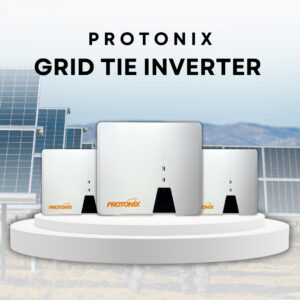A Complete Guide to Inverter Solar Systems: Powering Homes the Smarter Way
As solar technology evolves, homeowners are embracing smarter, more reliable power solutions. One standout component that brings solar setups to life is the inverter solar system. Whether you’re looking for efficiency, flexibility, or cost savings, having the right inverter setup makes a world of difference. In this blog, we’ll explore everything from the basics to micro inverter solar system design, with insights to help you make the right choice.
What Is an Inverter Solar System?
At the heart of any solar setup is the inverter—a device that converts the Direct Current (DC) produced by your solar panels into Alternating Current (AC), which your appliances can use. An inverter solar system ensures that the solar energy you capture is transformed into usable power for daily activities.
There are several types of solar inverters:
- String Inverters (most common in homes)
- Micro Inverters
- Hybrid Inverters
Off-Grid Inverters
Best Inverter Solar System: What to Look For
The best inverter solar system is one that matches your energy needs, budget, and installation type. When comparing options, consider the following:
- Efficiency: How well does the inverter convert solar power?
- Durability: Is it weatherproof if mounted outside?
- Warranty: A good inverter should offer 5–10 years of protection.
- Smart Features: Some come with Wi-Fi connectivity for real-time monitoring.
Brands like Luminous, SMA, Enphase, and SolarEdge are popular in India for their reliability and service network.
Exploring Micro Inverter Solar Systems
A micro inverter solar system is a newer, more flexible type of setup. Instead of one central inverter, each panel gets its own small inverter. This offers multiple advantages:
- Panel-Level Optimization: Each panel works independently, so shading on one doesn’t affect the others.
- Scalability: You can easily add more panels later without upgrading the whole system.
- Improved Safety: Lower DC voltage makes the system safer, especially for residential rooftops.
Although slightly more expensive than traditional systems, micro inverters often pay off with better performance and longer lifespan.
Understanding Micro Inverter Solar System Design
Designing a micro inverter solar system involves a few key steps:
- Panel Selection: Choose high-efficiency panels based on your space and energy requirement.
- Inverter Matching: Ensure each micro inverter is compatible with the panel’s output.
- Wiring Layout: While simpler than string systems, it’s still important to plan your micro inverter solar system wiring diagram for safety and efficiency.
- Monitoring System: Many micro inverters come with built-in monitoring, giving you panel-level insights via mobile apps.
This system is especially effective in areas where parts of the roof may experience partial shading during the day.
What About a Without Inverter Solar System?
A without inverter solar system does exist, but it’s extremely limited. These systems typically power small DC appliances directly from solar panels or use solar chargers for battery-based devices. They’re good for camping or emergency kits, but for full-scale home usage, an inverter is essential.
If you’re looking for a practical household solar solution, skipping the inverter isn’t advisable unless your usage is very niche.
Sizing Up: 5kW Inverter Solar System
A 5kW inverter solar system is ideal for medium-sized homes. It can power:
- Lighting and fans
- Refrigerators
- TVs and laptops
- Washing machines
- Some air conditioning units
This system usually requires about 12–15 solar panels (depending on panel wattage) and comes with a matching inverter, battery (for hybrid/off-grid), and safety components. It’s a popular choice in India due to its balance between power and affordability.
Here’s what to expect with a 5kW setup:
- Daily output: Around 20 kWh
- Roof space: 350–400 sq ft
Fortuner’s Approach to Solar Power
At Fortuner, we believe the key to smart living is sustainable energy. Whether you’re just starting out with a few panels or investing in a micro inverter solar system, our team helps you find the right design, components, and installation strategy. We simplify the complex, delivering efficient, safe, and scalable solutions tailored to your lifestyle.
From helping you choose the best inverter solar system to mapping out your micro inverter solar system wiring diagram, Fortuner makes solar energy easy and accessible.
Final Thoughts
As the world transitions to renewable energy, choosing the right inverter solar system is no longer optional—it’s essential. With choices like micro inverters, hybrid designs, and robust 5kW systems, there’s something for every home and need.
Ready to switch to solar? Explore Fortuner’s range of trusted solar products and start your journey toward cleaner, more reliable power today.
Have Any Question?
Get clarity, fast. We’re here to answer your questions and address any concerns.
- +91-8126919394
- info@fortuners.net








